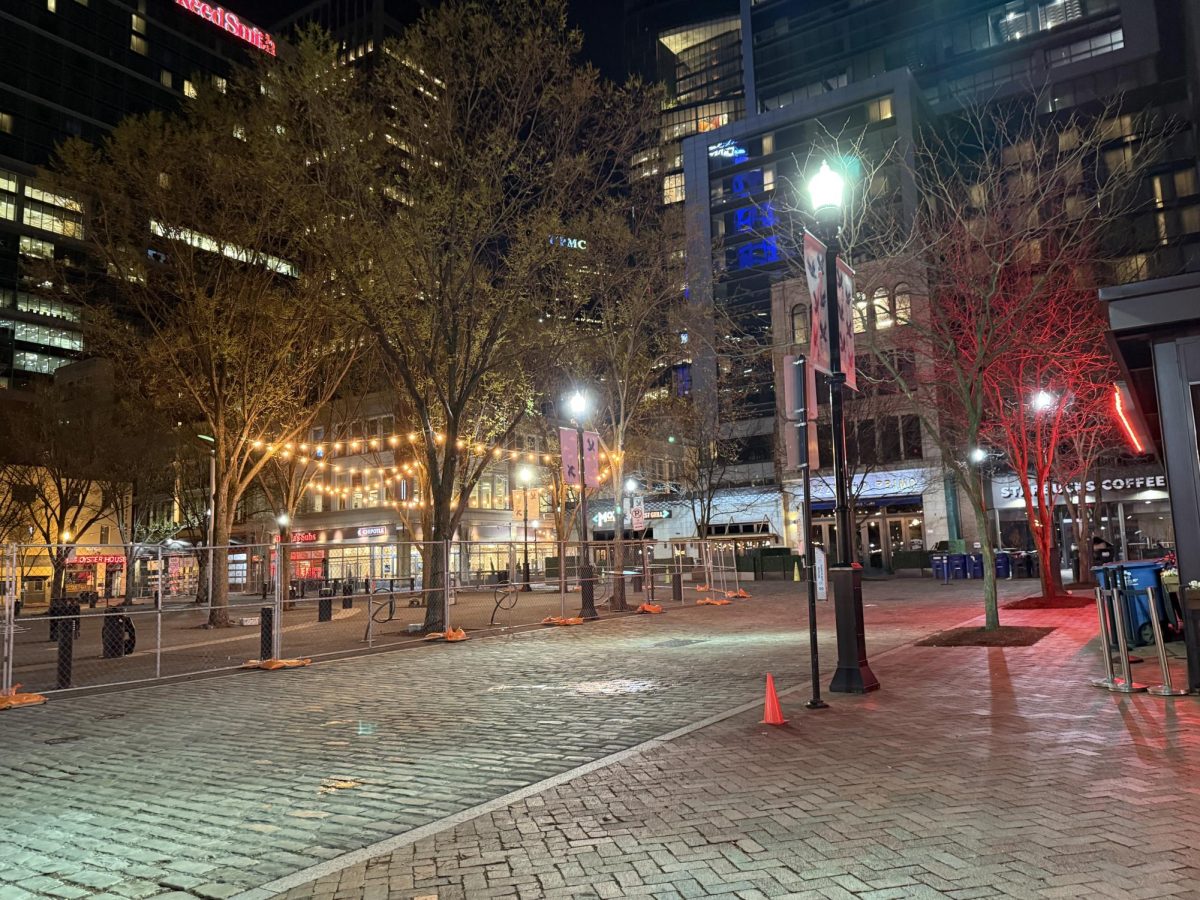
photo by Gracey Evans
Point Park School of Communication, The Honors Program and the student chapter of the National Press Photographers Association hosted a screening of the award winning documentary “Frame by Frame” last Tuesday night in the JVH. The documentary features photojournalists in Afghanistan and the trials and tribulations they endure on a daily basis.
The reality of the plight and opportunity photojournalists face covering the lives of citizens in Afghanistan was featured Feb. 9 in the JVH Auditorium.
The event, hosted by the School of Communication and the Honors Program, invited students as well as professionals to watch and discuss the significance of the documentary “Frame By Frame.”
“I think it will inspire young photojournalists and photographers to go out into their own neighborhood, and any boundaries and barriers that you might think are there are nothing compared to this film,” said Jasmine Goldband, a Point Park alumna and photographer at the Pittsburgh Tribune-Review.
The film featured a few Afghanistan photojournalists and their everyday lives. Students were able to learn about what each of those photojournalists focus on from conflict to the lives of Afghanistan women, and the importance of having this focus in the photojournalists’ careers.
Goldband hoped that the film would inspire them to learn about life outside of the United States after witnessing day-to-day life in Afghanistan.
Chris Rolinson introduced Goldband to an audience filled with not only students, but professional photographers as well as photojournalists and she shared her thoughts on her pre-screening of the film with Honors Student Organization (HSO) Director Helen Fallon and another co-worker.
The documentary gave those in attendance a chance to witness day-to-day life in Afghanistan for photojournalists and the difficulties that these people had to overcome, including the hoops photojournalist Farzana Wahidy had to jump through in order to get her story on the women burn victims found in her country.
Without other media sources to report, these photojournalists are the ones who have to document what is happening in their country, including the conflict coverage of a bombing that won Massoud Hossaini a Pulitzer Prize.
Photojournalist Renee Rosensteel discussed afterward her own experience in Afghanistan and the struggles of being a foreigner, including how obvious it was that she was an outsider in the country. She told a story of how she tried to fit in by wearing a scarf on her head, but she wrapped it so terribly that even male Afghanistan natives were walking up to her to fix it.
Fallon had been the one to discover this documentary among emails about journalism, and she was immediately fascinated with the trailer. After she read about it, she had intended to show it to her Journalism 101 class in the fall, but believed that the film should be viewed by more than just a small crowd.
In order to bring the screening to Point Park, she helped to pay the $250 licensing fee for the movie along with the honors program because she believed that students should be learning outside of the classroom and that the fee for the movie was worth the learning experience.
“This documentary goes a long way towards explaining the status of journalism and photojournalism, in particular, in Afghanistan, and by that you can learn the history of Afghanistan,” Fallon said.
Jacqueline Roberts, a junior journalism major, said she enjoyed the movie, saying that it was an eye-opener for her. The documentary enhanced her perspective on the photography field, particularly in Afghanistan.
“I mostly learned that photojournalism isn’t just a field,” Roberts said. “It’s something that you do because you want to tell a story.”
As for Matt Nemeth, a senior photography major, he believed the movie gave him a basic understanding of the field outside of the United States. It connected his experience here in the U.S. with the experiences of the Afghanistan photographers.
“One of my favorite parts of the film was the more humanistic aspect to it…it was the perfect way to show that these people’s lives are just like ours,” Nemeth said.

Photo by Emily Bennett
Point Park photography alumni Michael Gregory and Tyler Banash were among many who attended and enjoyed a screening of the Frame by Frame documentary last Tuesday night in the JVH, hosted by the Point Park School of Communication, The Honors Program and the student chapter of the National Press Photographers Association.







